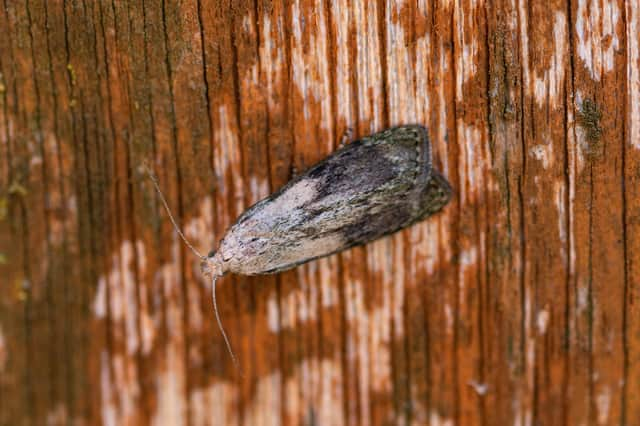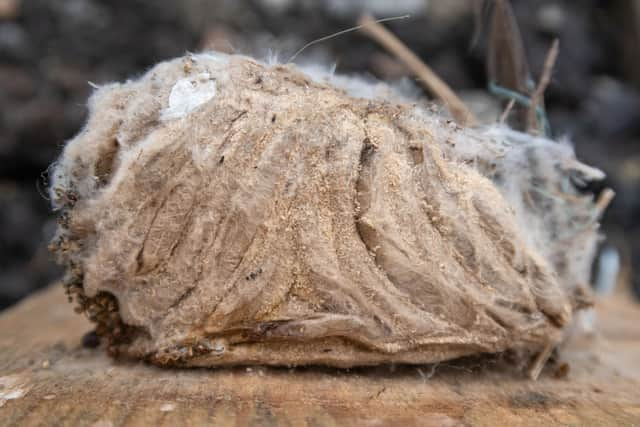NATURE NOTES: The amazing world of the bee moth


Tree sparrows are semi-colonial so it’s possible to put up lots of boxes in a small area. We monitor the boxes throughout the breeding season and we have found that the population is doing well as a result of our nest box scheme. Unlike blue tits, for example, who make a nice tidy nest in the bottom of a box, trees sparrows cram as much material in to the box as they can - filling it to the brim with grass, straw, feathers and sadly more commonly, plastic. One of our jobs each winter, before the new breeding season starts is to mend damaged boxes and clean out the previous years nesting material. This lengthens the time the box can be used and reduces the threat from parasites.
This winter we found a box that had blown down in the winter storms, on checking it, the lid would not budge, almost as if it was glued to the box. I took it back to the workshop and prised it open with a large screwdriver to discover a bee nest, but with this really strong glue-like substance holding it all together and to the lid of the box. I suspected the work of
Advertisement
Hide AdAdvertisement
Hide Adbee moths as there were some small yellow larvae visible at the bottom of the nest. There was only one way to find out sure. We placed the lid of the nest box, with the bee nest still attached into a bucket covered with a fine mesh and left it in our workshop. Two weeks ago, we spotted the first moth on the mesh lid – it was indeed a bee moth. Since then 258 bee moths have emerged from the nest with a maximum count of 61 on one day.


The bee moth Aphomia sociella is native to Europe. Its body and fore-wings are typically reddish brown, tan, or dark green in color and females have a dark spot in the center of each fore-wing. It is known as the bee moth because the female lays her eggs in a wide variety of bumble bee, hornet, and wasp nests. In our case we think the nest of a tree bumble bee was the host. The larvae build the strong gluey silk cocoon structures which can be up to 50mm long to protect themselves. They then feed on the environment around them including any stored pollen, honey, wax and even the larvae of the host species if they are unprotected.
In some areas bee moths are considered a pest because they can attack and decimate commercial bee hives.
Bee moths are also studied for their unique mating ritual which includes a release of pheromones from both the male and the female along with an ultrasonic signal emitted by the male. These sounds are generated from wing movements that create high-frequency oscillations that can be heard for up to half a metre. The daily counts are ranging between zero and three, so I don’t think there can be many left to emerge.
One nest box - A home designed for one species, the tree sparrow, taken over by another, the tree bumblebee, to be taken over again by a third species, the bee moth. Isn’t nature amazing?